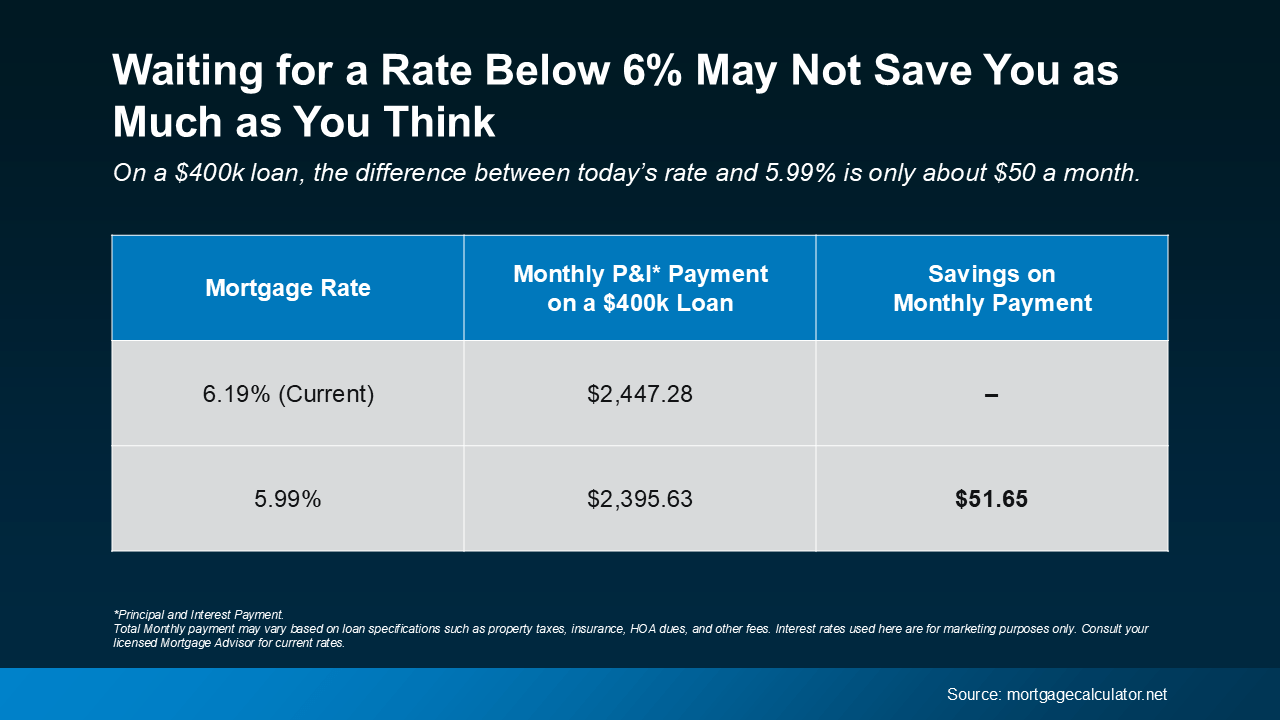Top 10 Tips to Sell Your Home Faster

Selling your home quickly and for the best price is all about thoughtful preparation. With a focused strategy, you can attract serious buyers and move toward a successful closing in record time. Here are ten practical tips to help you prepare your property for a fast sale.
1. Price It Right From the Start
Set your price based on a thorough analysis of comparable homes (or “comps”) that have recently sold in your area. Overpricing can scare away buyers and leave your home sitting on the market, so work with your agent to find that sweet spot that reflects actual market value.
2. Boost Your Curb Appeal
First impressions are everything. Make buyers fall in love before they even step inside by power washing siding, cleaning windows, and planting fresh flowers. A new welcome mat and a freshly painted front door are impactful yet effective touches.
3. Handle Repairs and Consider a Pre-Inspection
Address any nagging issues, such as leaky faucets, cracked tiles, or broken light fixtures. Completing a pre-listing inspection can also reveal hidden problems, allowing you to address them upfront and offer buyers total peace of mind.
4. Declutter and Depersonalize Your Space
Help buyers envision themselves living in your home by packing away personal photos, collections, and excess furniture. Clearing countertops and organizing closets makes your space feel larger, cleaner, and more inviting.
5. Stage for Maximum Appeal
Arrange furniture to highlight your home’s best features and improve flow from room to room. Proper staging helps define each space and shows buyers how they can utilize it, transforming empty rooms into functional and appealing areas.
6. Invest in Professional Photos and Video
Most buyers start their search online, making high-quality visuals essential. Professional photos and a video tour will make your listing stand out, capturing your home’s best angles and attracting more showing requests.
7. Be Flexible with Showings
The more people who see your home, the faster you’ll get an offer. Try to accommodate as many showing requests as possible, including those on evenings and weekends, to make it easy for potential buyers to visit.
8. Write a Compelling Listing Description
Work with your agent to craft a description that tells a story. Highlight key features, such as a new kitchen or a spacious backyard, and mention nearby amenities like parks, excellent schools, or popular cafes to showcase the complete lifestyle.
9. Create a Strategic Launch Plan
Timing is key to generating buzz. Plan to list your home later in the week to capture the attention of weekend house hunters and consider holding an open house on the first weekend to create a sense of urgency.
10. Prepare for Negotiations
When an offer comes in, please review it carefully with your agent. A strong offer is about more than just price; look for buyers with pre-approval letters and minimal contingencies to ensure a smoother, faster closing process.
Ready to put these tips into action? Call me, together we can sell your house quickly! Liz Norvelle 928-458-4025
Stage Your Garage: A Seller’s Guide to a Faster Sale
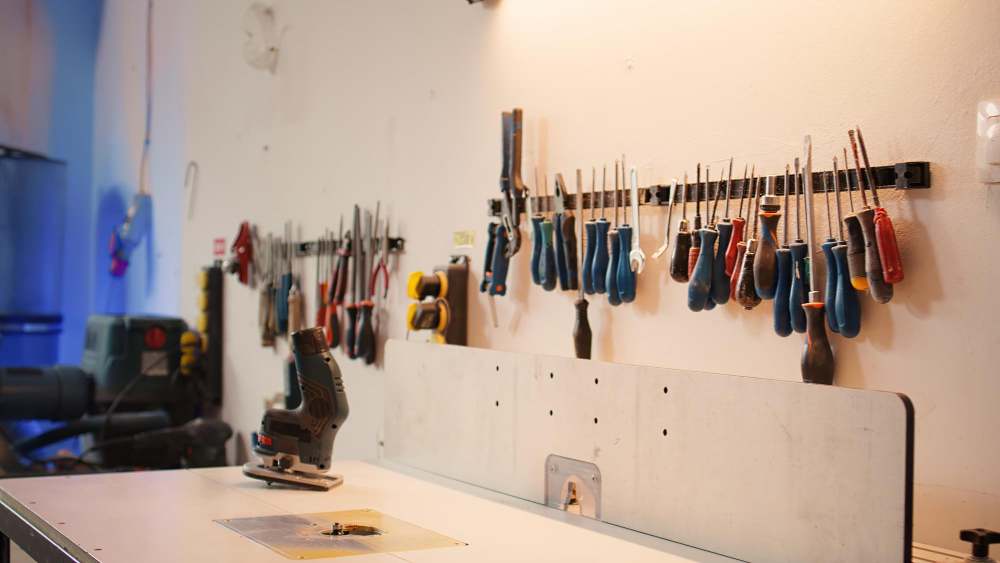
When you prepare to sell your home, you likely focus on the kitchen, bathrooms, and curb appeal. But what about the garage? Many sellers overlook this space, treating it as a last-minute dumping ground for clutter. A well-staged garage can be a powerful selling point that helps your home sell faster and for a better price.
Potential buyers see a clean, organized garage not just as a place to park cars, but as valuable, usable square footage. It shows them the home has been well-maintained and offers possibilities for hobbies, storage, and more. This guide provides a practical, step-by-step plan to transform your garage from a forgotten space into a feature that wows buyers.
Garage Staging Process
Step 1: Declutter, Sort, and Dispose
The most crucial step is ruthless decluttering. The goal is to empty the garage by at least 50% to create a sense of spaciousness.
The Four-Box Method
Set up four distinct areas or use large bins labeled:
- Keep: Items you use regularly and will take to your new home. Be strict. If you haven’t used it in a year, it probably doesn’t belong here.
- Donate: Items in good condition that can benefit others. Think old tools, sports gear, or furniture.
- Sell: Higher-value items you don’t need. Consider online marketplaces, consignment shops, or a garage sale.
- Trash/Recycle: Broken items, expired chemicals, and anything unusable.
Handling Unwanted Items
Properly disposing of items is key.
- Donations: Local charities such as Goodwill, Salvation Army, or Habitat for Humanity ReStore are excellent options. Some offer pickup services for larger items.
- Disposal: For hazardous materials such as old paint, pesticides, or motor oil, check with your local municipality to find designated hazardous waste drop-off days or facilities. Never pour these down the drain or put them in regular trash. For large amounts of junk, consider renting a small dumpster for a weekend.
Step 2: Smart Storage Solutions
Once decluttered, the goal is to get as much as possible off the floor. Vertical and overhead storage make the garage look larger and more organized.
Vertical Wall Storage
- Open Shelving: Sturdy, freestanding metal or plastic shelving units are affordable and effective. They allow you to neatly stack bins.
- Pegboards: A classic for a reason. Pegboards are perfect for hanging tools, gardening equipment, and small items, keeping them visible and accessible.
Overhead Ceiling Racks
Don’t forget the space above your head. Ceiling-mounted racks are ideal for storing items you don’t need often, such as holiday decorations or camping gear.
Cohesive Containers
Invest in a set of matching, opaque storage bins with lids. Clear bins can look cluttered. Using uniform containers creates a clean, intentional look. Label each bin clearly so buyers (and you) know the space is functional.
Step 3: High-Impact, Low-Cost Upgrades
A few cosmetic and functional improvements can dramatically elevate your garage’s appeal without breaking the bank.
Refresh the Floor
A stained, cracked concrete floor can make the whole garage feel grimy.
- Epoxy Floor Coating: This is the gold standard. An epoxy coating provides a durable, glossy, and easy-to-clean surface that resists stains. It makes the entire space feel finished and professional.
- Interlocking Floor Mats: A less permanent but still effective option. These mats can cover imperfections and add a clean, patterned look.
Improve the Lighting
Most garages are equipped with a single, dim bulb. Buyers respond to bright, well-lit spaces.
- Upgrade Fixtures: Replace bare bulbs with bright, energy-efficient LED shop lights. They provide even, daylight-quality light, making the garage feel safer and more inviting.
Quick Cosmetic Fixes
- Patch and Paint: Fill any holes or cracks in the drywall. Apply a fresh coat of neutral-colored paint (like a light gray or beige) to the walls. This simple step can make the garage feel 100% cleaner and brighter.
- Update Hardware: Replace old, rusty cabinet handles or light switch covers. It’s a small detail that contributes to a fresh look.
- Label Everything: Use a label maker to mark shelves, bins, and cabinets. This reinforces the theme of organization and shows buyers the space is thoughtfully designed.
Preparing for Photos and Open Houses
For professional photos and buyer showings, the garage should be pristine.
- Park Cars Elsewhere: Always remove cars from the garage for photos and viewings. This makes the space look as large as possible.
- Open the Door: Let in natural light by opening the garage door during daytime showings.
- Turn on All Lights: Showcase your new, bright lighting.
- Final Sweep: Do one last sweep to remove any dust, cobwebs, or debris.
By investing a little time and effort into your garage, you do more than clean up a messy space. You present a complete, well-maintained home that allows buyers to see its full potential, helping you secure a top-dollar offer in record time.
Give Liz Norvelle a call when you are ready to sell your home!
Liz Norvelle
928-458-4025
What a Fed Rate Cut Could Mean for Mortgage Rates

The Federal Reserve (the Fed) meets this week, and expectations are high that they’ll cut the Federal Funds Rate. But does that mean mortgage rates will drop? Let’s clear up the confusion.
The Fed Doesn’t Directly Set Mortgage Rates
Right now, all eyes are on the Fed. Most economists expect they’ll cut the Federal Funds Rate at their mid-September meeting to try to head off a potential recession.
According to the CME FedWatch Tool, markets are already betting on it. There’s virtually a 100% chance of a September cut. And based on what we know now, there’s about a 92% chance it’ll be a small cut (25 basis points) and an 8% chance it will be a bigger cut (50 basis points):

So, what exactly is the Federal Funds Rate? It’s the short-term interest rate banks charge each other. It impacts borrowing costs across the economy, but it’s not the same thing as mortgage rates. Still, the Fed’s actions can shape the direction mortgage rates take next.
Why Markets Already Saw This Cut Coming
Here’s the part that may surprise you. Mortgage rates tend to respond to what the financial markets think the Fed will do, before the Fed officially acts. Basically, when markets anticipate a Fed cut, that outlook gets priced into mortgage rates ahead of time.
That’s exactly what happened after weaker-than-expected jobs reports on August 1 and September 5. Each time, mortgage rates ticked down as financial markets grew more confident a cut was coming soon. And even though inflation rose slightly in the latest CPI report, the Fed is still expected to make a cut.
So, if the Fed goes with a 25-basis point cut, as expected, that’s likely already baked in to current mortgage rates, and we may not see a dramatic drop.
But if they go bigger and drop their Federal Funds Rate by 50 basis points instead, mortgage rates could come down more than they already have.
So, Where Do Mortgage Rates Go from Here?
While the upcoming cut may not move the needle much, many experts expect the Fed could cut the Federal Funds Rate more than once before the end of the year. Of course, that’s if the economy continues to cool (see graph below):

As Sam Williamson, Senior Economist at First American, explains:
“For mortgage rates, investor confidence in a forthcoming rate-cutting cycle could help push borrowing costs lower in the back half of 2025, offering some relief to housing affordability and potentially helping to boost buyer demand and overall market activity.”
If multiple rate cuts happen, or even if markets just believe they will, mortgage rates could ease further in the months ahead. But here’s the catch – all of this depends on how the economy evolves. Surprise inflation data or unexpected shifts could quickly change the outlook.
Bottom Line
Mortgage rates likely won’t drop sharply overnight, and they won’t mirror the Fed’s moves one-for-one. But if the Fed begins a rate-cutting cycle, and markets continue to expect it, mortgage rates could trend lower later this year and into 2026.
If you’ve been waiting and watching the housing market, now’s the time to talk strategy. Even small changes in rates can make a meaningful difference in affordability, and understanding what’s ahead helps you make the best decision for your situation.
About Liz
Liz Norvelle believes that building a relationship based on respect and trust is what truly matters.
Liz lived in the Grand Canyon for nearly 20 years and during that time she made the beautiful outdoors of Northern Arizona a part of her daily life. When she and her family moved to Prescott they bought a house and had a great experience with their Realtor. Liz decided she wanted to become a part of that great team and found they share the same vision of customer care, respect and service and also understand the importance of supporting the community in which they practice their business.
Liz and her husband make the time to take advantage of what our great outdoors offers. From kayaking on Watson Lake or Lynx Lake to get a glimpse of the Bald Eagles, to mountain biking any of the hundreds of bike trails in the Prescott area, or even hiking up and around Granite Mountain to witness the spectacular views. Their son has been very successful participating in Nationally recognized mountain bike races here in Prescott ( The Whiskey Off-Road has the largest purse in the U.S.) as well as coaching one of the high school mountain bike teams while attending Yavapai College for his degree in Fire Science.
The exceptional customer service that Liz provides will establish the groundwork for a relationship with her clients that will continue into the future when you’re ready for your next home or when friends and family come to join you in your new home town.
Please contact Liz, she will take the time to get to know you and assist you in finding a home that best fits your lifestyle needs.
Online Home-Buying Search Terms Recently Hit 2-Year High

Believe it or not, there are clear signs buyer interest is heating up again.
Let’s talk about what’s really going on behind the scenes, and why the housing market might not be as quiet out there as it seems.
Buyers Are Looking, and Search Trends Prove It
One of the clearest ways to measure what people are thinking about is to look at what they’re searching for online. And according to Google Trends, searches for phrases like “home for sale” have been climbing steadily this year.
The graph below shows an index of two common homebuyer search phrases and how popular they were on Google over the past two years. The higher the line goes, the more popular that phrase was. A 100 on the graph shows the most popular time for each phrase:

Here’s what really stands out in this data. Both phrases have been trending up overall this year, and they hit a recent high in mid-July. That’s a pretty strong sign that curiosity (and maybe even interest) in buying a home is improving.
That kind of momentum means something. Despite high mortgage rates and home prices, buyers haven’t given up. They’re still watching the market. They’re still browsing. And many are just waiting for the right opportunity to act. Maybe your house is exactly what they’re looking for. But you’ll never know if it’s not listed yet.
Now, this doesn’t mean demand is going to surge like it did during the pandemic. It just means some buyers are deciding they can’t wait any longer. And those are exactly the kind of buyers you want. Motivated. Eager. Ready to move when the right house comes along.
So, if you’re holding off on selling because you’re not sure if the demand is there, this data suggests it might be time to rethink your plans. Because while it’s not 2021-level demand, it doesn’t need to be. You don’t need ten offers to sell your home. You just need the right buyer.
And that buyer may be searching for a house like yours right now.
Bottom Line
If you’ve been thinking, “I’ll sell once buyers come back,” you might want to take another look. Online search trends show they’re already interested.
What would make you feel confident putting your house on the market this year? Let’s connect to talk through it. Liz Norvelle 928-458-4025. I’m honest, fair, ethical and I have expert level knowledge of our market. I’m a fierce negotiator and I will always put your interests first. I will sell your home for it’s highest value and best terms to help you get where you want to be. My Buyer representation is of the highest quality and I have expert level knowledge of the real estate contracts to help get your offer accepted. [More About Liz]

The information contained, and the opinions expressed, in this article are not intended to be construed as investment advice. Keeping Current Matters, Inc. does not guarantee or warrant the accuracy or completeness of the information or opinions contained herein. Nothing herein should be construed as investment advice. You should always conduct your own research and due diligence and obtain professional advice before making any investment decision. Keeping Current Matters, Inc. will not be liable for any loss or damage caused by your reliance on the information or opinions contained herein.
Home Renovations That Offer the Best Return on Investment
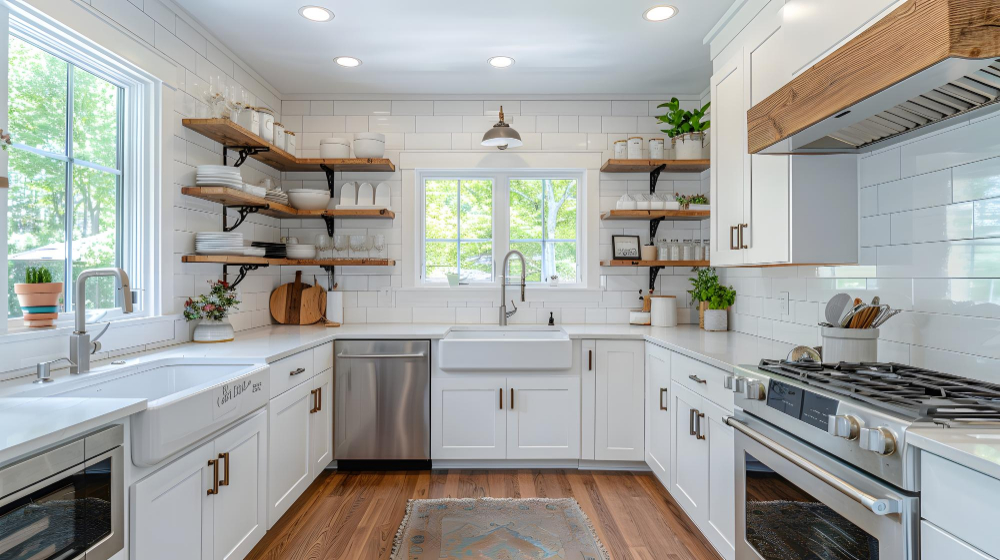
Renovating your home can be as exciting as it is daunting. Whether you’re preparing to sell or just eager to boost your property’s value, focusing on updates that deliver the highest return on investment (ROI) is essential. Not all renovations are created equal, and while some add significant value, others may be more costly than they’re worth.
Let’s explore the home renovations that will help you get the most bang for your buck.
1. Kitchen Remodels
The kitchen is often considered the heart of the home, making it a top spot for return-driven updates. Potential buyers typically lean toward homes with modern, functional kitchens, so investing here is smart.
What adds value:
- Minor upgrades: Replace outdated appliances with energy-efficient models, refresh cabinets with a coat of paint or new hardware, and swap out laminate countertops for affordable alternatives like quartz.
- Payback: A minor kitchen renovation can recoup around 70–80% of the cost.
Pro Tip: Avoid going overly upscale. Gourmet kitchens may look stunning, but they don’t consistently deliver a higher ROI for the cost. Stick to practical, updated features.
2. Bathroom Renovations
An updated bathroom signals cleanliness and modern convenience, which buyers find appealing. Often, a mid-range bathroom remodel pays off better than an ultra-luxury overhaul.
What adds value:
- Replacing old fixtures (e.g., faucets, showerheads) with modern ones
- Updating lighting for softer, flattering tones
- Installing efficient toilets or low-flow showerheads for eco-conscious upgrades
Payback: Expect an ROI of 60–70%, especially when focusing on upgrades like tile flooring and walk-in showers.
Pro Tip: Paint in neutral tones, such as soft gray or off-white, to appeal to the broadest range of buyers.
3. Curb Appeal Improvements
First impressions matter, and enhancing the exterior of your home can dramatically boost its perceived value. A well-maintained exterior gives buyers confidence before they even step inside.
What adds value:
- Replacing an old front door with a steel one
- Adding a fresh coat of exterior paint or upgrading siding
- Planting shrubs or laying fresh mulch for landscaping
Payback: According to Remodeling Magazine, improvements like a fresh coat of exterior paint or a new garage door can return up to 90–95% of the cost when you sell.
Pro Tip: When landscaping, choose low-maintenance plants that thrive in your climate to save time and money.
4. Energy-Efficient Upgrades
Today’s buyers value homes that save money and help the environment. Swapping old systems for energy-efficient alternatives boosts ROI while potentially lowering utility bills.
What adds value:
- Installing energy-efficient windows
- Adding attic insulation
- Upgrading your HVAC system with a high-efficiency model
Payback: Energy efficiency upgrades often yield an ROI of 60–80%, and depending on where you live, they may even qualify for tax incentives.
Pro Tip: If you’re short on budget, a simple smart thermostat installation (costing under $250) is an inexpensive upgrade with great appeal.
5. Converting Unused Spaces
Turning unused or underutilized areas of your home into livable spaces can significantly increase value. Think basements, attics, or even garages transformed into functional rooms.
What adds value:
- Finishing a basement into a media room or guest suite
- Converting an attic into an additional bedroom
- Turning a portion of the garage into a home gym or office
Payback: A basement remodel can provide up to 70% ROI, while converting an attic into a bedroom can deliver 60–65% ROI.
Pro Tip: Focus on spaces with universal appeal. A cozy guest suite or home office is more marketable than custom hobby spaces.
6. Decks and Outdoor Spaces
With more homeowners craving outdoor living spaces, adding a deck or sprucing up your backyard is a value-adding move.
What adds value:
- Adding a wood deck or refurbishing an existing one
- Setting up outdoor lighting or a fire pit for warmth and ambiance
- Incorporating a pergola for shade and modern design
Payback: Deck additions typically deliver around 65–75% ROI, making it one of the best outdoor upgrades you can invest in.
Pro Tip: For added charm, pair your new deck with modest landscaping enhancements, like planters and seating.
7. Fresh Interior Paint
Sometimes, the simplest updates make the most significant impact. A fresh coat of paint is an easy and cost-effective way to modernize your home and entice buyers.
What adds value:
- Sticking to neutral colors like beige, gray, or white
- Using high-quality paint for long-lasting results
Payback: With ROI upwards of 100%, a can of paint can sometimes deliver the highest returns for the lowest investment.
Pro Tip: If you’re selling, use widely appealing neutral tones. These help buyers envision their furniture and style in the space.
Give Me a Call
Not all home renovation projects are created equal. Focusing on updates that speak to modern buyer interests and improve functionality will help you get the best value for your investments.
Are you thinking of sprucing up your space to sell your home? Start with these top renovation ideas to ensure your efforts truly pay off. With the right choices, you can maximize your ROI while creating a space that’s as functional as it is beautiful. When you are ready to list your home, call Liz Norvelle at (928) 458-4025.
Renovations Buyers Love to See
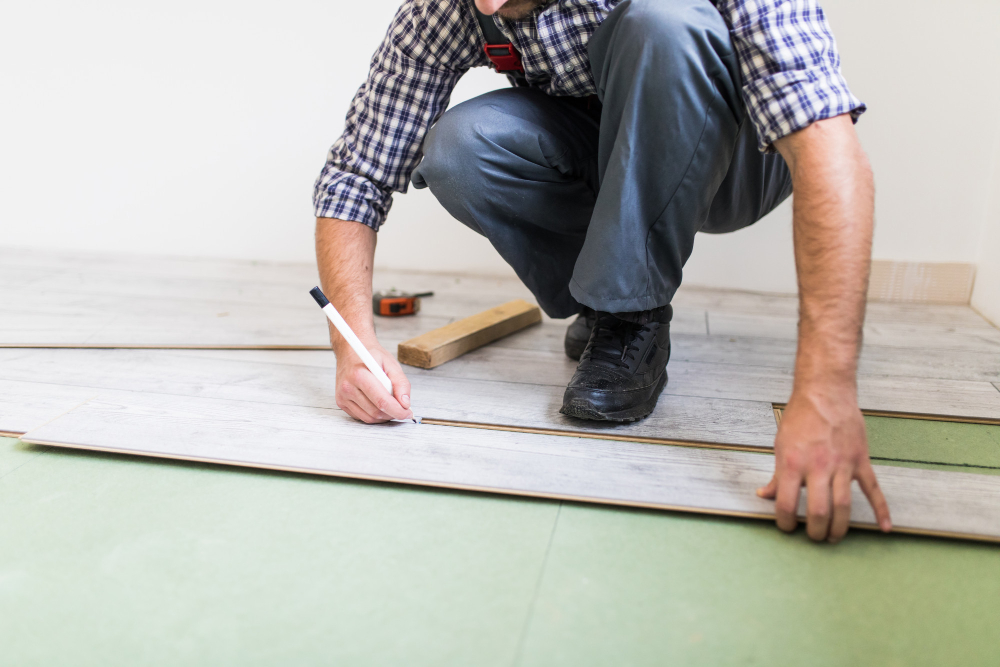
If you’re considering selling your home, one of the best ways to attract potential buyers and increase your home’s value is by focusing on renovations that people appreciate. While some upgrades are purely personal preferences, others consistently resonate with buyers and can serve as a good return on investment. Here’s a closer look at the renovations buyers are most eager to see.
Key Renovations That Catch Buyers’ Attention
1. Updated Kitchens
It’s said the kitchen is the heart of the home, and buyers couldn’t agree more. The condition and style of a kitchen can often make or break a deal. Popular upgrades include:
- Energy-efficient stainless steel appliances
- Quartz or granite countertops
- Modern cabinets with ample storage
- Stylish backsplashes
If a complete kitchen remodel isn’t in the budget, smaller updates like replacing hardware or updating the lighting can make a significant impact.
2. Fresh, Functional Bathrooms
Clean, updated bathrooms exude a sense of luxury. Buyers are particularly drawn to:
- Double sinks in master bathrooms
- Sleek walk-in showers with glass doors
- Freestanding bathtubs
- Modern fixtures and neutral tile designs
An outdated bathroom can turn buyers away, so making small changes like swapping out faucets or re-grouting tiles can breathe life into the space without breaking the bank.
3. Open Floor Plans
Many buyers today prefer open, airy spaces that allow for better flow between the living, dining, and kitchen areas. If you’re working with an older home that still has walled-off rooms, removing a non-load-bearing wall could showcase how much larger the space truly is. Highlighting multi-functionality is key.
4. Energy Efficiency Improvements
Energy efficiency isn’t just a trend—it’s a priority. Buyers like to see features that reduce utility costs and environmental impact. Consider including:
- Energy-efficient windows and doors
- Improved insulation
- Solar panels
Adding smart thermostats or energy star-rated appliances are simple touches that can make a big difference.
5. Outdoor Living Spaces
The pandemic renewed interest in ensuring outdoor spaces feel like sanctuaries. Focusing on patios, decks, or landscaped yards can significantly up your home’s appeal. Buyers love:
- Decks or patios for entertaining
- Low-maintenance landscaping
- Outdoor kitchens or fire pits
A well-designed outdoor living space creates a larger and more inviting home.
6. Storage, Storage, Storage
While style matters, practicality is a central selling point. Buyers value ample storage space, especially in these areas:
- Closets with built-in organizers
- Garage storage solutions
- Pantry space in the kitchen
If you don’t have room to build additional storage features, consider adding organization systems to maximize the functionality of what’s already there.
7. Hardwood Flooring
Carpets are falling out of favor. Buyers increasingly value the clean, modern feel of hardwood or high-quality laminate flooring. If you have existing hardwood beneath the old carpet, sanding and refinishing can instantly increase your home’s value.
8. Curb Appeal Updates
First impressions matter, so don’t neglect your home’s exterior. Work on these visible upgrades:
- A fresh coat of paint or siding update
- New or improved landscaping, including greenery or flower beds
- Replacing your front door or adding a pop of bold color
- Updated outdoor lighting
Curb appeal gets buyers through the door, and these updates often cost less than interior renovations.
9. Home Offices
Many buyers are still working remotely or splitting their time between home and the office, so a dedicated workspace is a major plus. Consider adding built-in shelving, good lighting, and electrical outlet enhancements to make an existing space feel more functional for remote work setups.
Ask Liz For Help
Buyers are looking for homes where major work has already been done—especially in areas that combine style with functionality. Focusing on kitchens, bathrooms, outdoor spaces, and energy efficiency will likely provide the most buyer appeal and potential return on investment.
While it’s easy to overspend on renovations, remember that sometimes simple upgrades can be just as effective. A bit of fresh paint, modern fixtures, or a strategic focus on organization and flow can elevate the overall feel of your home.
Are you not sure where to start? I have helped countless homeowners prepare their homes to sell. I can help you too! Call Liz Norvelle at (928) 458-4025.
Top 5 Ways to Maximize Small Living Spaces
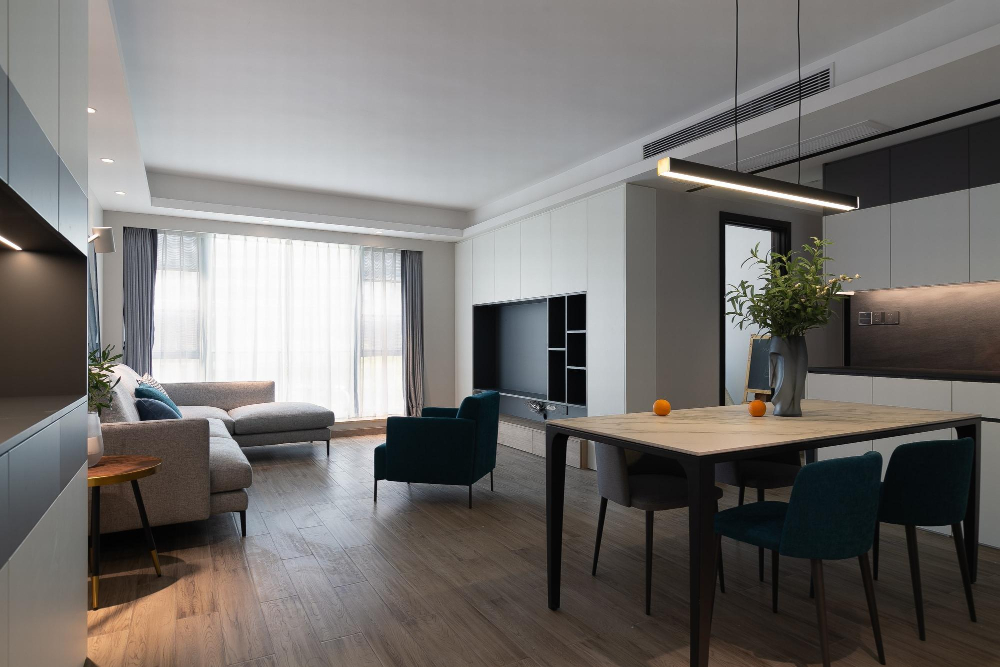
Living in a small space doesn’t have to mean sacrificing comfort or style. You can make the most of every square inch with creativity and thoughtful planning. Whether you’re working with a studio apartment, a cozy bedroom, or a compact living room, these top tips will help you create a functional and inviting space.
1. Opt for Multifunctional Furniture
Investing in furniture that serves multiple purposes is one of the most innovative ways to maximize a small living area. Look for items like:
- Sofa Beds: Perfect for small apartments, these allow you to have a seating area and a guest sleeping space.
- Storage Ottomans: They work as extra seating, a coffee table, and a place to stash blankets or books.
- Foldable Dining Tables: Expandable tables can double as a workstation when not in use.
Multifunctional furniture is all about adding value without taking up extra space.
2. Use Vertical Space
When floor space is limited, think upwards. Utilize vertical storage and create additional layers of functionality by incorporating the following ideas:
- Wall-Mounted Shelves: Ideal for displaying books, plants, or decorative items.
- Hanging Racks and Pegboards: Great for organizing kitchen tools, office supplies, or bathroom essentials.
- Over-the-Door Storage: From shoe racks to towel holders, these make use of spaces often overlooked.
Vertical storage keeps your belongings organized without cluttering your living area.
3. Choose Light Colors to Open Up the Space
Color can dramatically influence how spacious a room feels. Stick to light and neutral tones like white, cream, beige, or pastel shades for walls and larger furniture pieces.
- Light colors reflect more natural and artificial light, making rooms feel brighter and bigger.
- To add personality, introduce pops of color through accessories like cushions, rugs, or art pieces.
4. Zone Your Space with Rugs or Dividers
Even in a small living area, zoning helps define specific functions.
- Rugs can act as visual boundaries between a sitting area and a workspace.
- Open Shelving can serve as a divider while still letting light flow through.
- For ultra-small spaces, use folding screens or curtains to create temporary, flexible zones when needed.
Intentional zoning balances aesthetics and functionality.
5. Invest in Built-in Storage Solutions
If you’re ready to customize your space, built-ins are a game-changer.
- Install built-in wall units for books, files, and decor.
- Create storage benches under windows for a cozy seating area with hidden storage.
- Build custom wardrobes with compartments designed around your specific needs.
Built-ins make use of awkward nooks and wasted corners, adding efficiency without eating into your space.
There are Options
Maximizing small living spaces is all about smart choices. Investing in multifunctional furniture, utilizing vertical storage, and keeping your design light and uncluttered allows you to create a functional yet inviting home, no matter the square footage.
If you need more information on housing options in the Prescott area, I would love to help. Give me a call at 928-458-4025!


 Facebook
Facebook
 X
X
 Pinterest
Pinterest
 Copy Link
Copy Link

